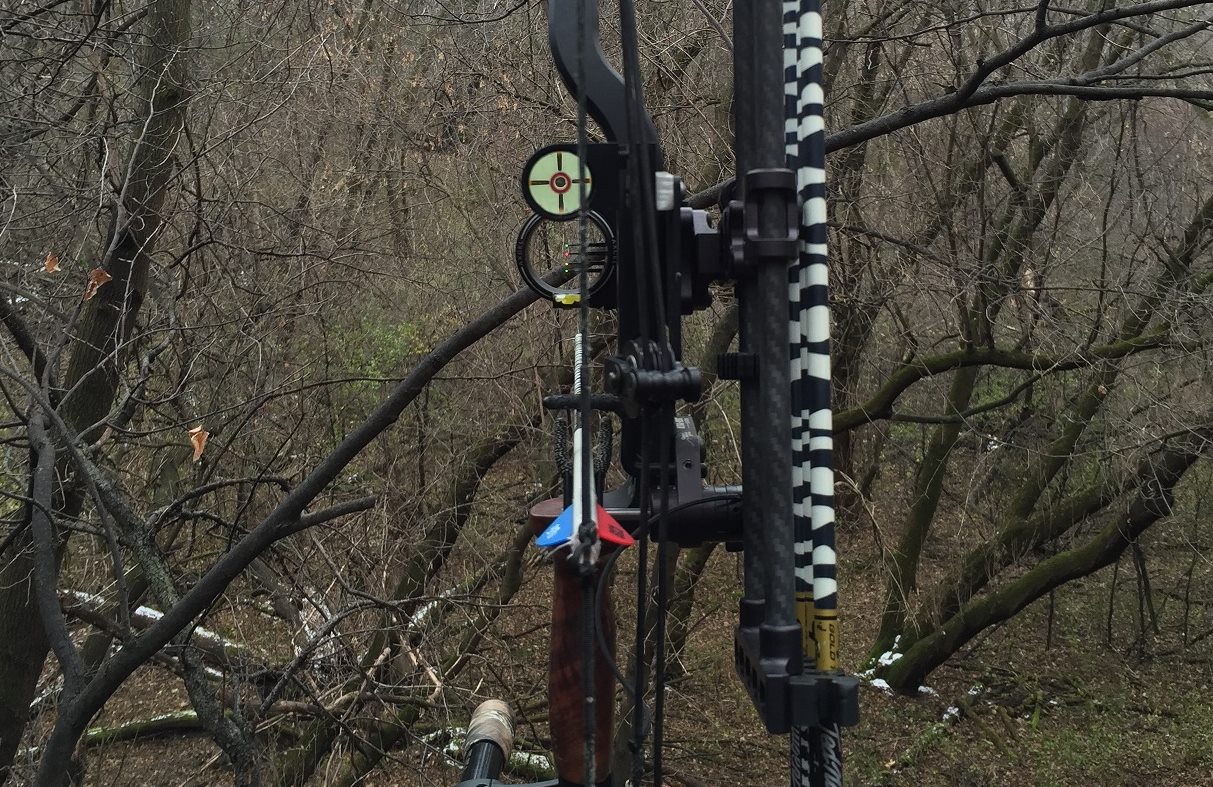
What Is Anchor Sight?
What Is It?
The Anchor Sight is a scope you look into through a magnifying lens to view a display that consists of tiny characters printed on a Glow disc. The characters are dashes and spaces, which form a cross similar to a rifle scope. The characters do not appear small when viewed through the lens because of the magnification; and since the scope is attached to the ridged part of the bow (not the string), you are actually watching a highly magnified movement of the bow and arrow.
For some, it takes a few days to get used to this new sighting technology; for others, it takes only a few arrows. When you shoot the Anchor Sight, you will discover a whole new world of knowledge. For the first time, you will be able to see what is really going on with your shot. You will see torque and learn how to control it. You will know when it was you that blew the shot and not wonder if it was one of the various other possibilities. You will see and react to every error you make. Now that you can identify these errors, it won’t take long before you will begin to improve. Soon you will be experimenting with range changes using the increments in the Anchor Sight with one front sight pin. You will shoot for the pure enjoyment of it, because you have control and love that feeling.
You will be amazed how the Anchor Sight holds you to correct form when shooting from a tree stand and how neat it is to have the freedom of full-target vision. Then, there is the added shooting time in the evening hours and a feeling of confidence when that final moment arrives.
How Does It Work?
The most common concern from shooters who are considering buying an Anchor Sight is: “I can’t see taking my eye off the target to look at the Anchor Sight!” The short answer to that concern is that you will get your shot off faster using the Anchor Sight than a string peep sight. The reason is that the Anchor Sight will be set up to your natural, best anchor point. When you draw and anchor, you will see the dot very near the center of the circle on the lens. Due to this, it takes very little adjustment to center the dot inside the circle, but that adjustment is often critical for proper placement of the arrow. It doesn’t take much of an error of angle to miss your target at 20 or 30+ yards, and your string peep won’t show you that.
In the center of the cross is a dot that you center in the red circle on the lens, thus creating a Sight Line to your eye. The Sight Line is always there, like the point of a needle, even though you can’t see it. If the dot or any character is in the circle, you have positioned the bow so a Sight Line extends directly to your eye. Any movement of the bow, or your eye, will misalign the bow’s position. When you change the bow position you also change the arrow’s position. Therefore, if you move the bow and view a dash instead of the dot, you have a new bow (arrow) position.
The amazing thing is how this all comes together! You can literally change the arrow impact point by viewing a different character in the display. Never before has it been possible to shoot a bow by simply changing the angle of the bow and viewing that change. You can use one front sight pin and view a different reference in the Anchor Sight to achieve range changes. Not only is this a very functional way of shooting, it also demonstrates how much control you have of the shot. For instance, you can shoot up or down, left or right, of your target. Wherever the dot is in the Anchor Sight that is where your arrow will strike on the target.

